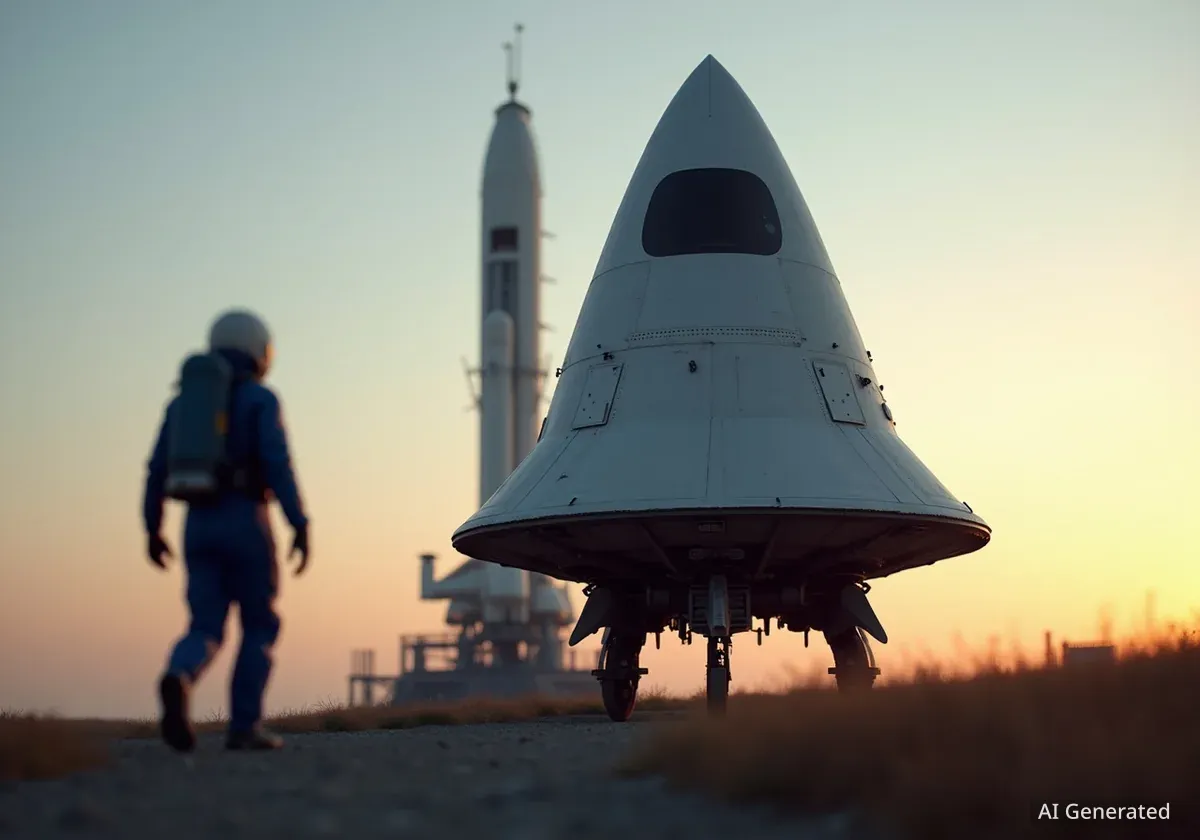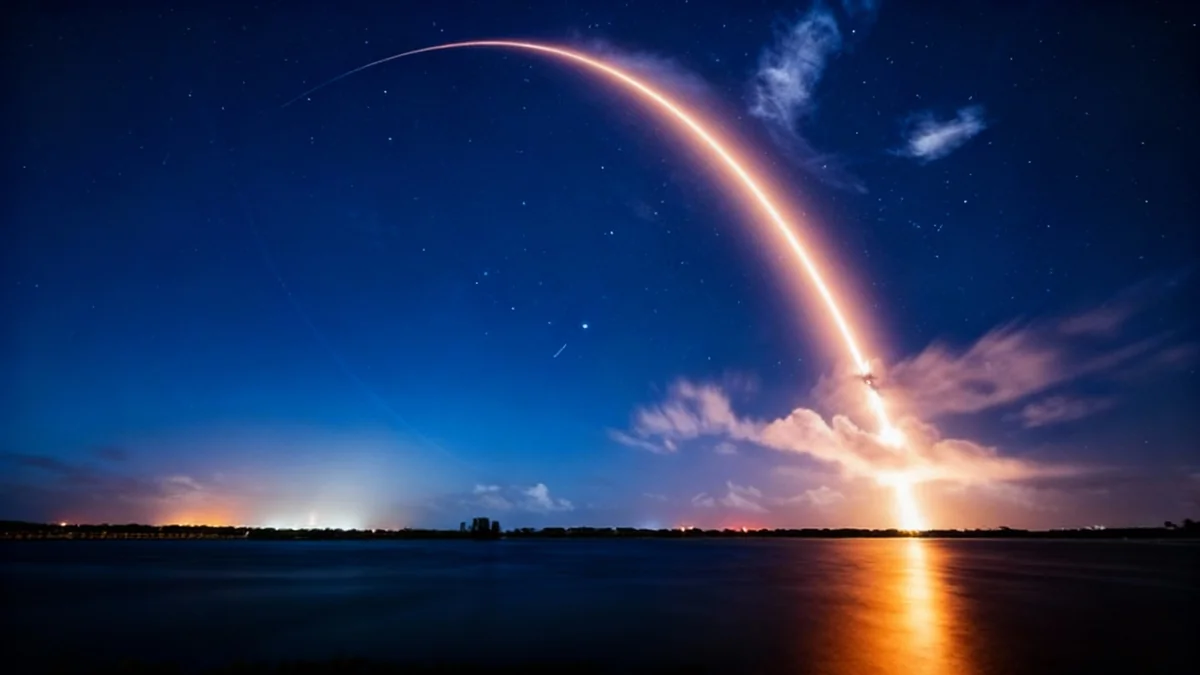Hans Koenigsmann, one of SpaceX's earliest and most respected employees who led mission assurance for two decades, has announced he will fly to space on a suborbital mission. The flight will be conducted by Blue Origin, a direct competitor to his former company, aboard its New Shepard rocket.
Koenigsmann will be joined by his friend Michaela Benthaus, who is set to become the first wheelchair user to travel to space. The mission highlights a unique collaboration and personal journey for the veteran rocket scientist who was responsible for investigating every major Falcon 9 rocket failure.
Key Takeaways
- Hans Koenigsmann, a foundational SpaceX employee, is scheduled for a suborbital flight on a Blue Origin New Shepard rocket.
- He will fly alongside Michaela Benthaus, who will make history as the first person who uses a wheelchair to go to space.
- Koenigsmann, known for his role in SpaceX's safety and mission assurance, addressed his concerns about flying with a competitor by speaking with both Blue Origin staff and SpaceX leadership.
- His primary motivations for the flight include experiencing the forces of launch from inside the capsule and seeing the curvature of the Earth.
A SpaceX Pioneer's New Mission
Hans Koenigsmann is a significant figure in the history of SpaceX. He joined the company in 2002 as its fourth employee, following founder Elon Musk, propulsion lead Tom Mueller, and structures expert Chris Thompson. His initial role was to develop the avionics for the company's first rocket, the Falcon 1.
Over a 20-year career, Koenigsmann's responsibilities grew substantially. He transitioned to become the Vice President of Mission Assurance, a critical role that placed him in charge of flight safety and reliability. In this capacity, he led the official investigations into every major failure of the Falcon 9 rocket, earning a reputation for his meticulous and transparent approach.
After retiring from SpaceX in late 2021, Koenigsmann has remained a respected voice in the aerospace community. His decision to fly to space marks a new chapter in his personal and professional life, shifting from the role of investigator to that of a passenger.
Who is Hans Koenigsmann?
Hans Koenigsmann was the fourth employee hired at SpaceX. He was instrumental in the company's development, serving as the Vice President of Mission Assurance and leading all major failure investigations for the Falcon 9 rocket. He is widely regarded as one of the key figures who helped establish SpaceX's culture of safety and reliability.
The Journey to a Blue Origin Flight
The plan for Koenigsmann's spaceflight originated from his friendship with Michaela "Michi" Benthaus. Benthaus, who sustained a spinal cord injury in a 2018 mountain biking accident, held a long-standing dream of becoming an astronaut.
Koenigsmann initially assisted her in securing a donation for a parabolic flight. The conversation later shifted toward suborbital spaceflight. "She kind of asked me, 'Do you think I could be an astronaut?'" Koenigsmann recalled. Recognizing the potential for a flight on a vehicle like New Shepard, where lower-body mobility is not a technical barrier, he decided to help.
He contacted Audrey Powers, a Blue Origin executive, who expressed strong support for the idea. As the project developed, Koenigsmann decided to join the mission himself. "In a very subtle and slippery slope, I thought about this and said, 'Actually, I think I can do this, too,'" he explained.
Addressing Safety and Company Loyalty
As a risk-assessment expert, Koenigsmann had several concerns before committing to the flight. His primary questions involved safety and the public perception of a former SpaceX leader flying with a main competitor.
"I don't know what they did for safety. I know what SpaceX did for safety," Koenigsmann stated.
To address this, he spoke with Blue Origin employees and asked detailed technical questions about their safety protocols. He reported feeling satisfied with their responses, noting they were answered "thoughtfully and correctly." The ultimate test for him, he said, is whether he would let his children fly on the vehicle.
Regarding the SpaceX and Blue Origin dynamic, he consulted with SpaceX President and COO Gwynne Shotwell. "I ran this by Gwynne. She was fine with it," he confirmed. This approval, along with conversations with another SpaceX employee who flew on Virgin Galactic, helped solidify his decision.
A Historic First
Michaela Benthaus's flight will be a landmark event in space travel. She is set to become the first person who uses a wheelchair to fly to space, demonstrating that physical disabilities are not necessarily a barrier to suborbital missions. Koenigsmann will have an additional role on the flight, being in charge of Benthaus's safety.
What to Expect on a Suborbital Flight
Unlike orbital missions that require months of intensive training, preparation for a New Shepard flight is much shorter, typically lasting only a couple of days. The training focuses on a few essential procedures that passengers need to memorize.
The flight itself is a brief but intense experience. The New Shepard rocket will accelerate the capsule past the Kármán line, the internationally recognized boundary of space at 100 kilometers (62 miles) altitude. Passengers will experience several minutes of weightlessness and see panoramic views of Earth against the blackness of space.
For Koenigsmann, the technical aspects of the flight are a major point of interest. He expressed a specific desire to understand a key moment in the launch sequence.
"I've always been interested in experiencing Max Q from the inside. Does it shake you side to side? Or is it just something you fly through so fast you don't even notice it?"
Max Q is the point of maximum aerodynamic pressure on a rocket during its ascent, a moment of significant physical stress on the vehicle. Koenigsmann noted that astronauts he has spoken with have not been able to provide a clear description of the sensation.
Beyond the technical curiosity, he is also looking forward to the profound personal experience. "I just want to see the whole thing from above and get an idea of how big it really is in terms of curvature," he said. "It gives you a great idea of how small we are and how big the planet is."





